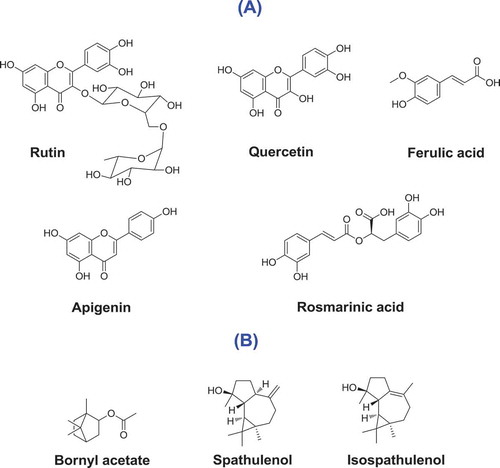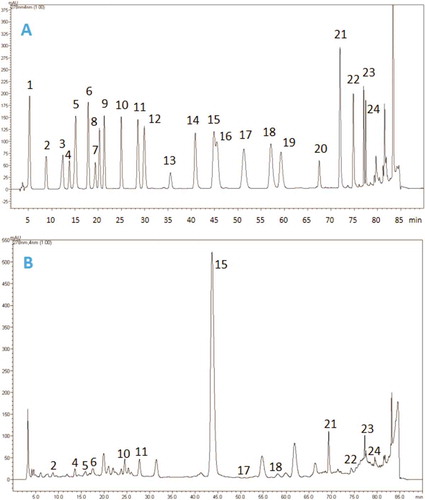Figures & data
Table 1. Chemical composition of the essential oil from the aerial parts of Salvia syriaca.
Figure 1. Major compounds found in A: methanolic extract; and B: the essential oil of Salvia syriaca.

Table 2. Antioxidant activity, total bioactive compounds, and toxicity of the essential oil and extracts of S. syriaca.a
Table 3. Enzyme inhibitory activity of the extracts and essential oil of Salvia syriaca.a
Table 4. Quantitative results for determination of phenolic components in the methanol extract of S. syriaca.
Figure 2. HPLC chromatograms of A: standard phenolic compounds; and B: the methanolic extract of S. syriaca. Standard phenolics used for analysis are 1: gallic acid, 2: protocatechuic acid, 3: (+)-catechin, 4: p-hydroxybenzoic acid, 5: chlorogenic acid, 6: caffeic acid, 7: (-)-epicatechin, 8: syringic acid, 9: vanillin, 10: p-coumaric acid, 11: ferulic acid, 12: sinapic acid, 13: benzoic acid, 14: o-coumaric acid, 15: rutin, 16: naringin, 17: hesperidin, 18: rosmarinic acid, 19: eriodictyol, 20: trans-cinnamic acid, 21: quercetin, 22: luteolin, 23: kaempferol, and 24: apigenin.

